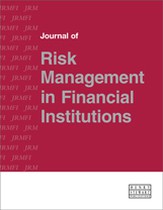Bank profitability: Liquidity, capital and asset quality
Abstract
The liquid assets to deposit ratio (LADR) is often cited as a key structural metric for deposit-taking institutions (DTIs). This ratio indicates the extent to which banks have liquidity on hand, funded by relatively stable and predictable (mainly retail) deposits, rather than by potentially more volatile wholesale debt funding. Of course, a bank’s balance sheet may also include deposits from large non-bank companies, which often behave like wholesale funding, but these tend to account, on average, for a lesser proportion of total deposits for a typical DTI. An LADR of at least 5 to 10 per cent, for an average DTI, is usually seen as a prudent level, as reinforced by the Basel III liquidity buffer stipulations.1 A low percentage could suggest bank vulnerability to liquidity risk, especially if there is relative reliance on short-term wholesale debt funding, and less on retail deposits, regarded as stable, despite being short-term. In a primarily wholesale debt funding strategy, what the bank might gain in terms of better matching asset with liability maturities could be outweighed by rollover funding risks. Moreover, while retail liabilities tend to have a short contractual maturity, they also usually have a much longer behavioural maturity, so can provide effective funding for longer-term loans as well. Yet banks may also face an opportunity cost associated with holding liquidity. Retail deposits tend to be relatively cheap, in terms of absolute interest rate, compared to long-term wholesale debt, but investment in liquid assets accordingly offers relatively low returns. A higher percentage of LADR theoretically should translate into lower net interest margin (NIM), the primary driver of most banks’ profitability, and hence a lower return on average assets (ROAA) compared to a bank maintaining low liquidity. A negative relationship on average might be expected between LADR and ROAA. This brief study examines this dynamic, using data over the most recent available year (2014–2015) over a large sample (around 13,000) of the world’s largest deposit-taking banks. Linear regression is performed of ROAA, not only against LADR, but also including other internal bank measures: non-performing loans (NPLs) to total gross loans and equity to assets (EQUITY). The most powerful relation with ROAA is seen to be NPLs, negatively correlated with profitability. Equity to assets shows a positive relation with profitability, while the reverse may have been expected due to the general ability of leverage to boost returns. LADR shows a slightly negative relation with profitability, as hypothesised. This could suggest that banks may be doing well by maintaining adequate liquidity and capital, in line with regulatory requirements, and in contrast to what bankers often claim. This could have implications for bank managements in considering liquidity and capital strategies, in the context of profitability.
The full article is available to subscribers to the journal.
Author's Biography
Edward Bace is a finance professional specialising in banking, finance and credit risk. He is on the faculty of the Bank Treasury and Risk Management (BTRM) programme in London. Following a long banking career, he acted as advisor to the Chartered Institute for Securities & Investment (CISI). He lectures in Middlesex University Business School’s Accounting & Finance Department, teaching finance, banking and economics, and has trained others in these areas in institutions around the world.
Citation
Bace, Edward (2016, October 1). Bank profitability: Liquidity, capital and asset quality. In the Journal of Risk Management in Financial Institutions, Volume 9, Issue 4. https://doi.org/10.69554/CRPU2203.Publications LLP
